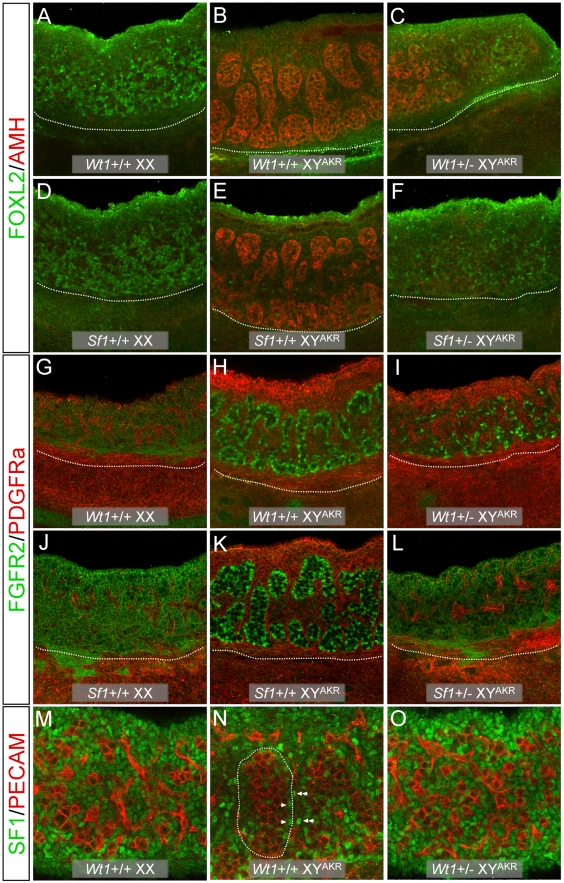Figure 1. WIHC analysis of morphology and marker expression in Wt1+/− and Sf1+/− B6 XYAKR E13.5 gonads.
(A–L). Confocal images of gonad/mesonephros complexes with gonads shown above and mesonephroi below the white dotted line (20× magnification). Heterozygous XY gonads differentiated as ovotestes (C), ovaries (F, L, O), or gonads that were morphologically ovarian but expressed testicular markers (I). The Wt1+/− XY ovotestis in (C) expressed AMH, a Sertoli cell marker, in the central region containing testicular cords but not at poles that lacked cords. FOXL2, a granulosa cell marker, was expressed at the poles. FOXL2 also was expressed in isolated cells within regions containing testicular cords in B6 XYAKR gonads (E). Heterozygous XY ovaries (F, L, O) expressed ovarian but not testicular markers. The Wt1+/− XY ovary in (F) expressed FOXL2 but not AMH throughout. The Sf1+/− XY ovary in (L) expressed FGFR2 on the surface of somatic cells (ovarian pattern) but did not have cells with nuclear localization of FGFR2 (testicular pattern, note localization in Sertoli cells (H, K)). The Wt1 +/− XY gonad in (I) was ovarian morphologically but contained many cells with nuclear localization of FGFR2. These cells were not organized into testicular cords. PDGFRa was expressed at high levels in the coelomic epithelium of B6 XYAKR gonads (H, K) and at lower levels in interstitial cells of B6 XX (G, J) and XYAKR (H, K) gonads. Ovotestes, expressed PDGFRa at high levels in the coelomic epithelium of regions containing cords and at lower levels in regions without cords (data not shown). The heterozygous XY ovary in (L) expressed PDGFRa in a pattern similar to XX ovaries. The masculinized ovary in (I) expressed PDGFRa in a testis-like pattern. (M–O) Confocal images showing SF1 expression in gonads (40× magnification). At this stage, SF1 is expressed at fairly equal levels in all somatic cells in wild-type XX ovaries (M). In wild-type testes, expression is up-regulated in Sertoli cells (arrowheads) within testis cords (outlined with white dotted line) and in specific interstitial cells (double arrowheads), while it is down-regulated in most other interstitial cells (N). The expression of SF1 in Wt1+/− XY ovaries (O) resembled that of wild-type XX ovaries as expression was uniform in all somatic cells. Note that overall SF1 expression levels were similar in normal XX (M) vs. Wt1+/− XY (O) ovaries.

